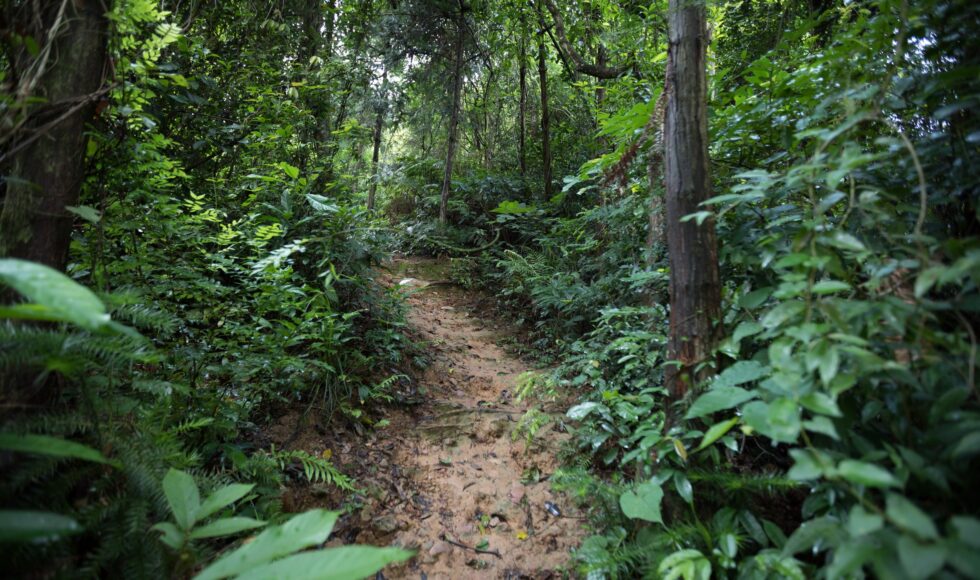For companies that work with commodity supply chains, ensuring their products weren’t produced on deforested land is the new cost of doing business. As global regulations ramp up, earning a Verified Deforestation Free (VDF) certification will become the norm in the transition to a climate-neutral economy.
So why is it that Global Canopy’s 2023 report on the Forest 500 has shown that 40% of companies don’t even have a deforestation policy? Worse yet, not a single one is deforestation-free?
Going VDF is not only about complying with regulations, it’s also about providing assurance to consumers and investors. Reputations are on the line. VDF certification is a sure sign that companies are committed to sustainable development in their supply chains.
If a company wants to reap the benefits of a VDF certification, it’ll have to navigate a bumpy road. Here are the five main obstacles to going VDF and how to solve them.
1. Truth and Traceability
Going VDF requires companies to prove that their products are not and have not contributed to deforestation. This verification process typically involves conducting a comprehensive assessment of a company’s land-use practices and supply chain, using tools such as remote sensing, satellite imagery, and on-the-ground inspections to monitor their supply chains and detect deforestation.
In the EU, companies will need to know the exact coordinates of where their ingredients or materials are grown, and be able to prove that they aren’t the result of deforestation that occurred after December 2020. The problem is, supply chains can be inscrutable, making it difficult to trace the origin of the ingredients and materials that wind on our supermarket shelves. In many cases, those traders don’t disclose the farms on which their commodities are grown.
Satelligence has comprehensive concession maps that allow clients to trace products down to the smallholder level. Satelligence is constantly adding more concessions to its network, and uses partners to fill in the gaps where necessary. When concession data is unavailable, Satelligence applies a differentiated km radius approach by commodity. For example, with palm oil, a 50km radius deforestation zone is applied as this represents the average maximum distance fresh palm oil bunches travel from farm to mill.
Combining satellite data with supply chain linkage information allows companies to create a land-use map of their supply chain, track deforestation, and take measures to address it in real time. Crucially, they can do this at a scale and cost factor that is far more attractive than the equivalent of manual checks.
2. Poor Data…
Deforestation can be hard to detect, particularly in remote areas or areas with heavy cloud cover. Different land types, regions, and commodities require different approaches to remote sensing. When combined with local biases in the interpretation of changes on the ground, modeling approaches to detecting deforestation aren’t universal or easily transferred.
Cheaper deforestation detection tools apply the same basic deforestation detection algorithms to every region, commodity, and land type. This can waste time and resources with misleading results, false positives, and inefficient use of limited boots-on-the-ground verification capacity.
AI machine learning has been crucial in overcoming barriers to detecting deforestation at scale. Satelligence has created an ISAE-3000 Type 1 Certified quality control audit process for each type of environment, country, or commodity, that can be adapted to any ecological region. With Satelligence’s algorithm, companies can expect the same universal quality control process when mapping cocoa in the Ivory Coast as they could for palm oil in Indonesia.
Borders needn’t get in the way of going VDF.
3. …Poor Interpretations of Data
Companies might be tempted to claim their products are deforestation-free, but with poor data, they can never be certain. If deforestation is discovered by NGOs, regulators, or otherwise, this can crush a company’s reputation or lead to fines and market exclusion.
Satelligence uses a combination of remote sensing sources, including satellites that can penetrate cloud cover. A team of commodity experts and engineers is employed to cross reference and curate the data gleaned from numerous satellite sources before it’s reported as fact.
4. The Standards Quagmire
Amidst an avalanche of acronyms and commitments, from well-known ones such as NDPE, sector-based commitments, and commitments on a company-to-company basis that all come with their own specific objectives and claims there remains no universal definition of deforestation. While regulations are on the rise, there is no universally accepted regulation or authority specifying rules for these different standards and commitments, which means that one company’s idea of what counts as deforestation-free is also different from another’s.
Satelligence adjusts its definition of deforestation to align with local laws. That means that companies that use Satelligence’s insights can be sure they are locally compliant and compliant with the EUDR, which specifically mandates local compliance.
5. Knowing your Cut-Off Date
Local laws on deforestation often include cut-off dates: the most recent date an area could have been deforested to be compliant. Cut-off dates also vary by commitment. The EU regulation says no product can be the result of deforestation after 31-12-2020, but the NDPE cut-off date is 31-12-2015.
Satelligence’s web app has archival satellite data that allows companies to check, at-a-glance, whether their products comply with the NDPE cut-off date. They can also check whether potential new suppliers are compliant, improving their sourcing decisions and informing their business practices. It goes without saying, but without accurate retroactive data, companies can’t say for sure whether their concessions and products are VDF.
Did we miss out on something?
Let us know and we’ll get your questions answered!
